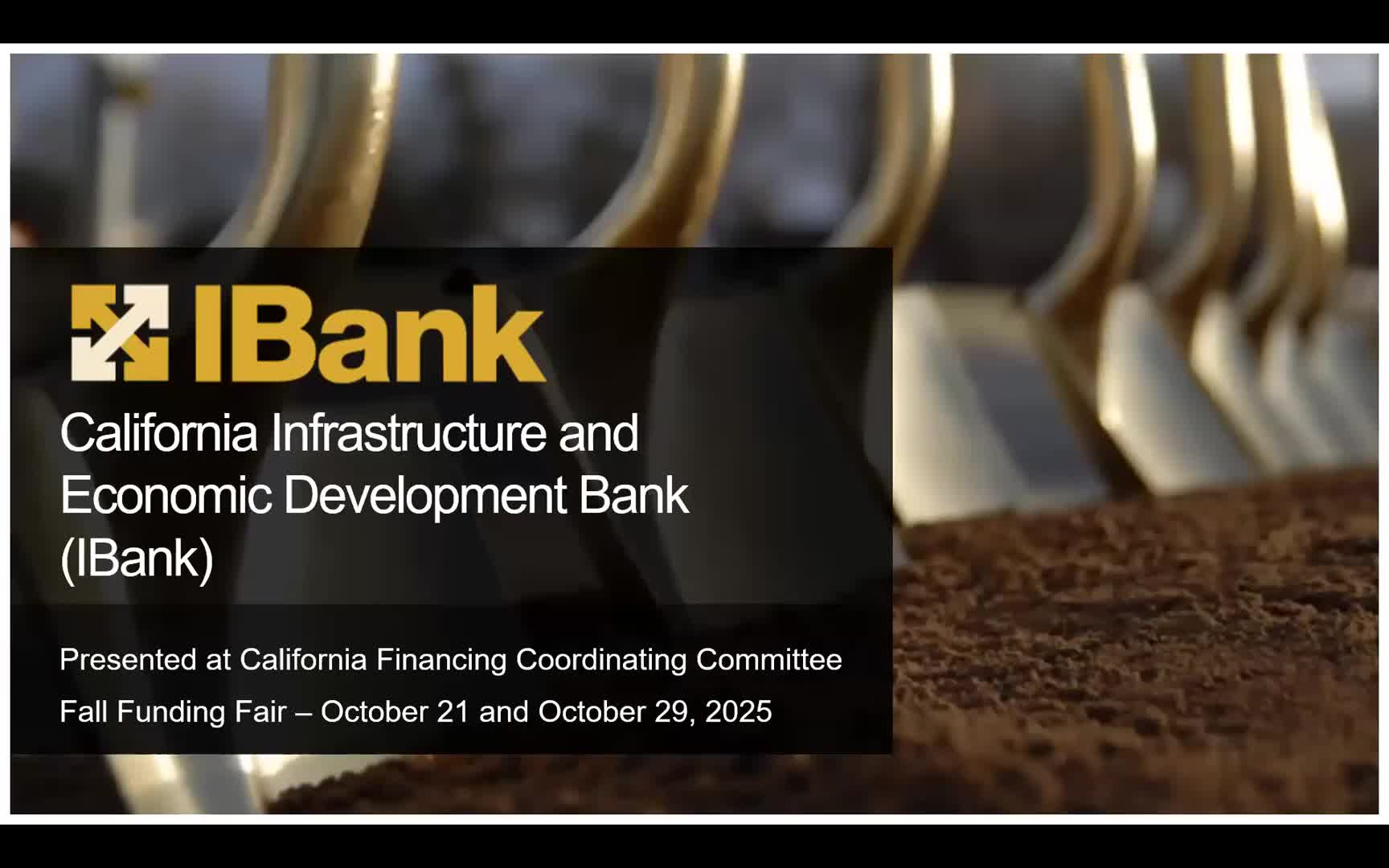California Infrastructure Bank outlines ISRF loans: who qualifies and what projects they finance
October 30, 2025 | State Water Resources Control Board, Agencies under Office of the Governor, Executive, California
This article was created by AI summarizing key points discussed. AI makes mistakes, so for full details and context, please refer to the video of the full meeting. Please report any errors so we can fix them. Report an error »

An iBank presenter summarized the bank's direct loan programs (including the Infrastructure State Revolving Fund/ISERP loans) and said loans can finance "any cost associated with the project, including design, acquiring, planning, constructing, and consulting costs." The presenter said loan sizes typically range from a $1 million minimum to a $65 million maximum and that terms of up to 30 years are available when supported by the useful life of the project.
The bank noted it can finance 100% of a project, although borrowers sometimes combine loans and grants. Loan repayment can be structured from enterprise revenues (system rates) or general fund sources; the bank also offers leaseback financing using unencumbered assets. The presenter gave examples of recent loans: Watsonville (an SB 1383 organics/processing project, $6 million), Encinitas (streetscape, $20 million), Tiburon Fire District (new fire station, $4.3 million) and San Diego (organics processing, $40 million).
Why this matters: iBank offers a noncompetitive, credit-based lending avenue for California public entities and certain nonprofits, often at lower cost than commercial borrowing. Borrowers should check program requirements early, obtain an executive reimbursement resolution before iBank board approval, and talk to loan officers for preliminary feedback.
Practical details: iBank said loans can generally be structured to cover hard and soft costs, may be taxable for portions with private activity, and that the agency's bonds are AAA-rated so the bank can provide competitive fixed rates. The presenter said the average ISERP underwriting-to-closing timeline is roughly five months but can be expedited in some cases.
The bank noted it can finance 100% of a project, although borrowers sometimes combine loans and grants. Loan repayment can be structured from enterprise revenues (system rates) or general fund sources; the bank also offers leaseback financing using unencumbered assets. The presenter gave examples of recent loans: Watsonville (an SB 1383 organics/processing project, $6 million), Encinitas (streetscape, $20 million), Tiburon Fire District (new fire station, $4.3 million) and San Diego (organics processing, $40 million).
Why this matters: iBank offers a noncompetitive, credit-based lending avenue for California public entities and certain nonprofits, often at lower cost than commercial borrowing. Borrowers should check program requirements early, obtain an executive reimbursement resolution before iBank board approval, and talk to loan officers for preliminary feedback.
Practical details: iBank said loans can generally be structured to cover hard and soft costs, may be taxable for portions with private activity, and that the agency's bonds are AAA-rated so the bank can provide competitive fixed rates. The presenter said the average ISERP underwriting-to-closing timeline is roughly five months but can be expedited in some cases.
Don't Miss a Word: See the Full Meeting!
Go beyond summaries. Unlock every video, transcript, and key insight with a Founder Membership.
✓
Get instant access to full meeting videos
✓
Search and clip any phrase from complete transcripts
✓
Receive AI-powered summaries & custom alerts
✓
Enjoy lifetime, unrestricted access to government data
30-day money-back guarantee

